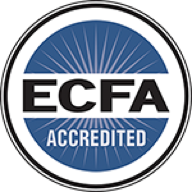There are two sources for contributions sent to an employer retirement plan, such as the FCMM Plan:
(1) EmployER Contributions and
(2) EmployEE Contributions.
The correct reporting of these two sources of contributions is important for W-2 filing, for hardship withdrawal rules, for FAFSA and tax reporting, and for annual contribution limits.
EmployER contributions are a benefit of employment provided to an employee, in addition to salary paid. They are not withheld from the employee’s salary. The employer contribution is determined by the Employer and should be accurately stated in the Employer Adoption Agreement (Form 20). Employer contributions can be a base contribution rate or amount, the employer’s corresponding contribution to a matching employee contribution, or both.
Employer contributions can be remitted on a per pay period, monthly, quarterly, or annual basis as determined by the employer. In the case of a matching contribution, the employer match should be sent at the same time as the employee’s deferral is remitted, per pay period or monthly.
EmployEE contributions, also called salary deferral contributions, are withheld from an employee’s salary each pay period on either a pre-tax or Roth (after-tax) basis. Salary deferral contributions are voluntary and are initiated by the participant completing the salary deferral section of the Investment Selection and Salary Deferral Form (Form 03). This form should then be given to the employer to sign on the last page and send to FCMM.
Unless the employer has set a different threshold, all employees regularly working 20 hours a week or more should be given the opportunity to make salary deferral contributions.
Employee contributions must be remitted to FCMM as soon as reasonable for the proper administration of the plan. An example of a reasonable time is no later than 15 business days following the month in which contributions are withheld from an employee’s salary.
W-2 Reporting of Contributions
When preparing W-2s, ALL participating employees should have a checkmark next to “Retirement Plan” in Box 13 of the W-2. The reporting of EmployER and EmployEE contribution amounts, however, are each treated differently.
At year-end, the total employEE deferral amount withheld must be reported in Box 12 on the employee’s W-2, with pre-tax and Roth deferrals noted separately with the appropriate codes.
Inclusion of employER contributions on the W-2 is not required but the annual amount may optionallybe recorded in box 14,for reference purposes only.
What about annual negotiation of an EmployER contribution?
It has been a practice of some smaller churches to ask the pastor each year how he would like his compensation “divvied up”, including what portion the church would give as an employer contribution.
While this practice is not conclusively non-compliant, it does not reflect the IRS understanding of an employer contribution, which should be determined solely by the employer.
Contributions that reduce salary should properly be handled as voluntary employee salary deferral. As mentioned above, the salary deferral should be formally requested and documented by use of Form 03. In the case of a pre-tax deferral, the amount will lessen the amount of taxable wages reported in Box 1 of the employee’s W-2. (For Roth contributions, the amount in Box 1 is not reduced, since Roth-designated amounts are subject to tax in the year contributed.)
We have seen miscommunication occur when an employer contribution is negotiated for the year and then is reported to FCMM as salary deferral “since the staff member chose the amount”.
For clear and proper contribution remittance reporting, it is the best practice to handle salary reduction rightly as the voluntary request of the staff member, based on completion of Form 03.

